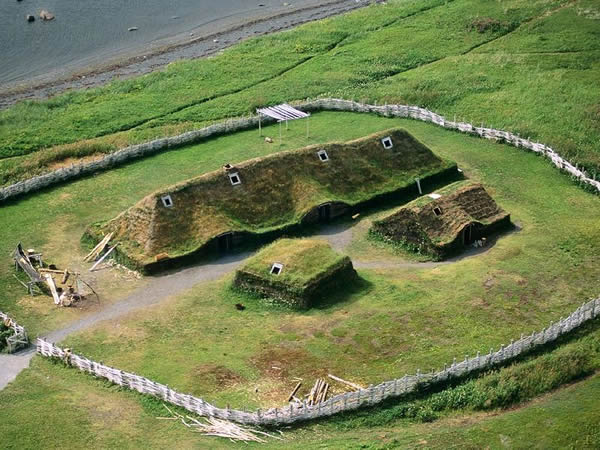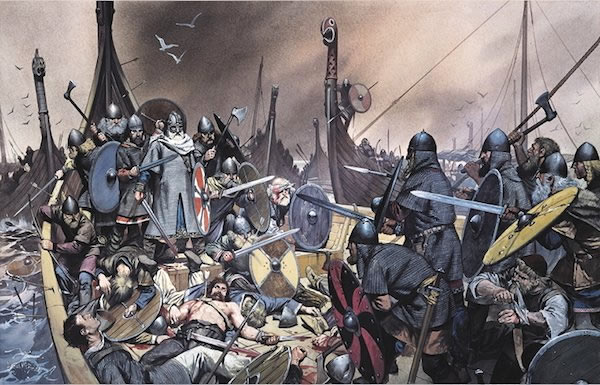 |
| L’Anse aux Meadows |
With the discovery in 1960–61 of artifacts and the ruins of eight buildings at L’Anse aux Meadows in Canada’s Newfoundland province, archaeologists and historians could at last replace centuries of fable and myth with hard evidence of Viking settlement in what, a half-millennium later, other Europeans would call the New World.
Excavations at the remote site, begun by husband-and-wife team Helge and Anne Stine Ingstad, revealed a web of connections between Greenland and Iceland’s people of Norse heritage and Vinland. Vinland was the Viking name for a western land rich in prized grapes and butternuts, lumber and fi sh, located in what today is eastern Canada and the extreme northeastern United States.
Evidence found since then has enabled historians to link Viking activity in the New World to often-inconsistent tales of exploration and conquest found in ancient Norse sagas. L’Anse is now believed to have been a base camp for Norse chieftain Leif Ericson and others during the so-called Medieval Warm Period: several centuries of milder weather that permitted vigorous Norse exploration of sub-Arctic regions in both northern Europe and eastern Canada.
  |
During a three-year sojourn in Vinland, Ericson’s former sister-in-law, Gudrid, then married to rival chieftain Karlsefni, gave birth to a son, Snorri, the first European known to be born in the Americas.
Established sometime between 990 and 1030 and abandoned after just a few years, L’Anse provided access to Vinland and was a landmark for sailors from Greenland and other Norse settlements. Although it seems that some women were among about 100 people housed in eight sturdy wood and sod structures, L’Anse was less a colony than a gateway to southern Vinland’s richer resources.
It was also a workshop where Norse traders could find provisions and repair their ships and weapons. Slaves, probably of Scots or German origin, and sailors visiting L’Anse manned labor crews and ran a small iron-making operation, the first known in North America.
Indigenous people, dismissively called skraeling by the Vikings, had often successfully confronted Norse invaders in other parts of Vinland but were not then living on the grassy peninsula where L’Anse was built.
Nevertheless, residents soon abandoned the site, carefully removing useful goods and possibly setting fire to the largest dwelling halls. They may have feared new indigenous attacks, or perhaps Vinland was not producing enough desirable resources and trade items to make the difficulties of living there preferable to longer settled Greenland and Iceland.
In 1497 five years after Christopher Columbus’s first voyage to what he believed to be Asia, Venetian John Cabot, sailing for England, “discovered” a “new isle,” soon named Newfoundland. Historians continue to argue whether other Europeans ever knew of Viking incursions into this western land or had forgotten that knowledge over the centuries.
   |
In any case, interest in Viking deeds, possibly including discovery of the New World, would become, especially for Scandinavian immigrants to America, a source of pride and fascination. In 1837 a Danish scholar translated parts of the Vinland sagas into English and argued for Norse presence in America. His research helped spawn various hoaxes and fantasies of America’s Viking past.
In 2000 the Smithsonian Institution’s National Museum of Natural History celebrated the millennium of the first European contact with North America. L’Anse is a Canadian National Historic Site, a UNESCO World Heritage Site, and a tourist attraction. During its brief summer season, costumed reenactors show and tell visitors about America’s Viking past.
